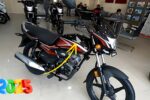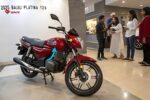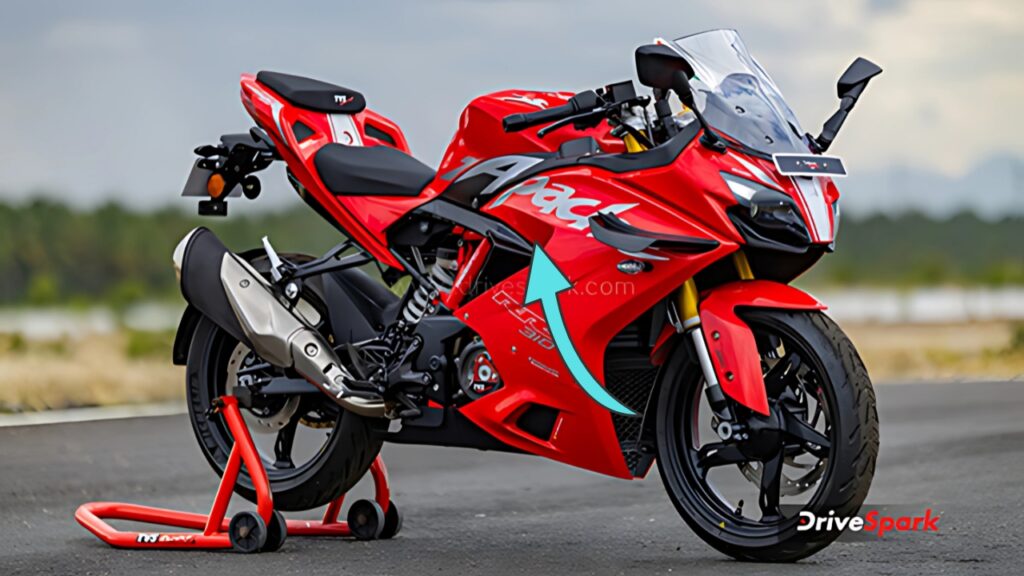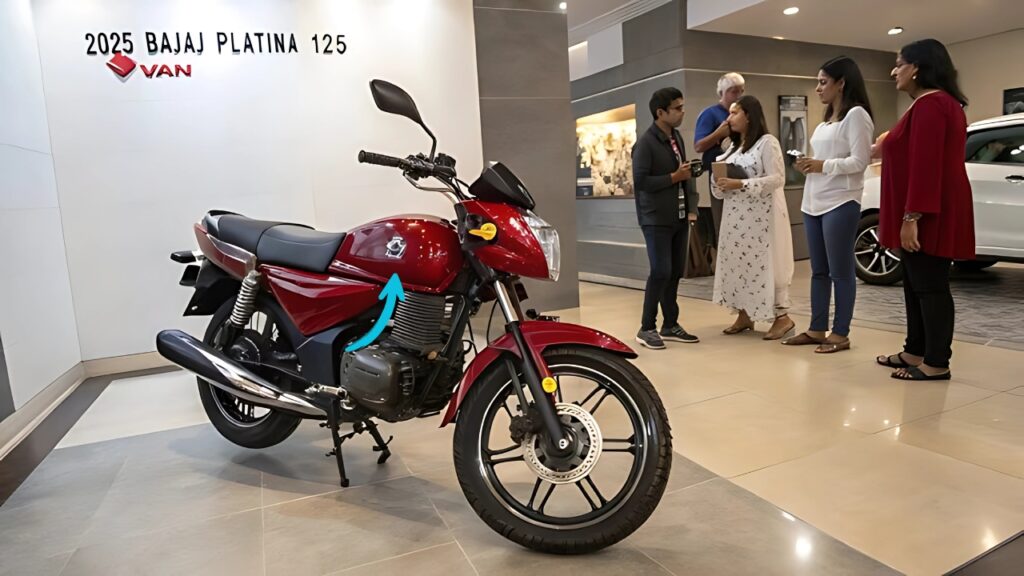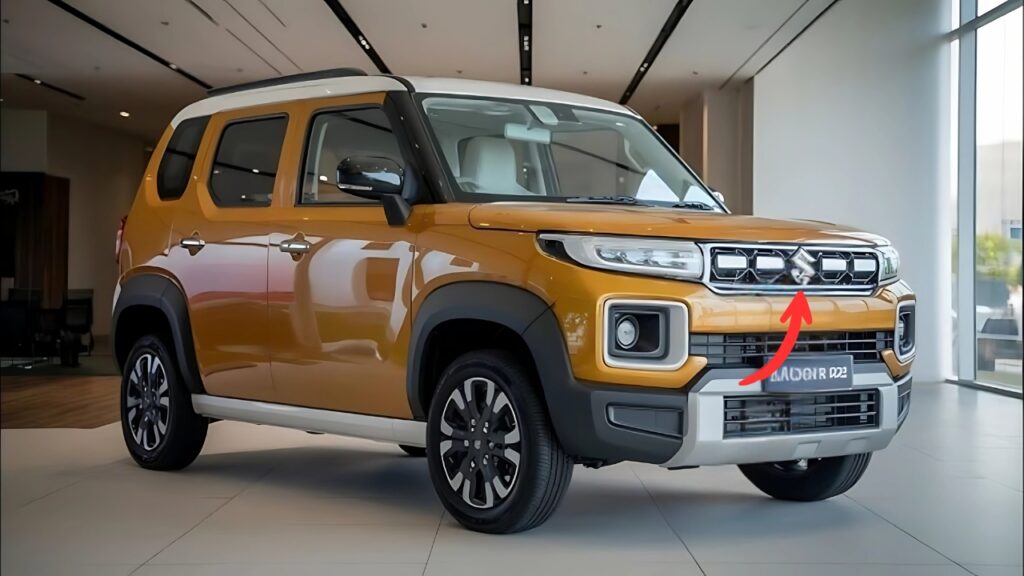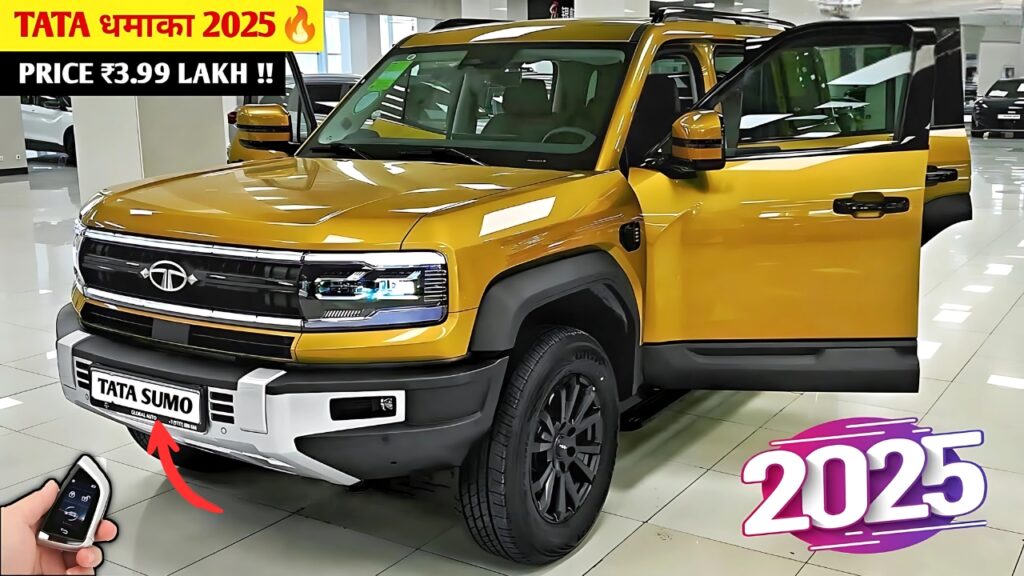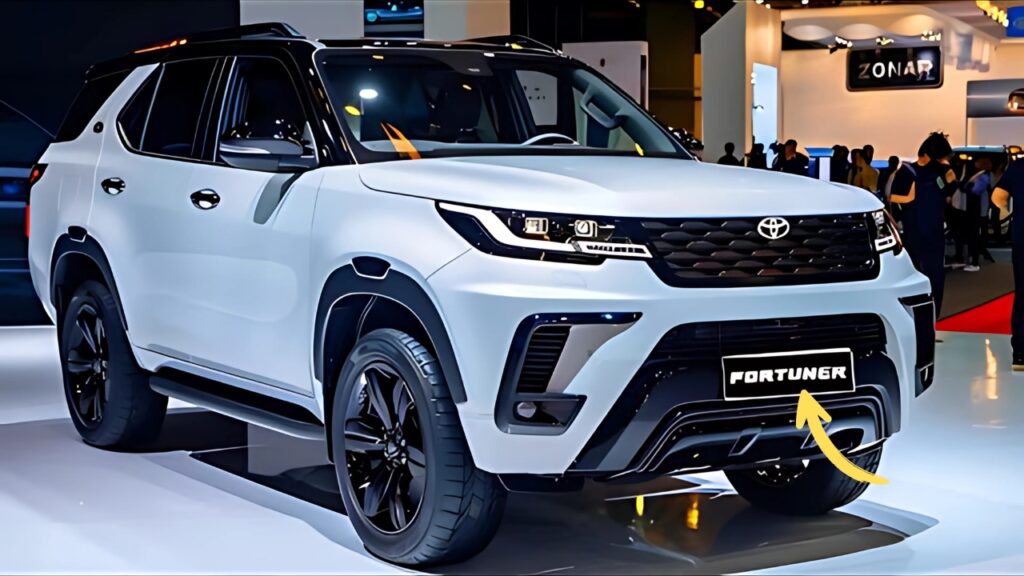Bajaj Platina 110: In the bustling streets of Indian cities and the winding roads of rural towns, commuter motorcycles serve as the backbone of personal transportation.
Among these utilitarian machines stands the Bajaj Platina 110, a motorcycle that has quietly but consistently carved a niche for itself in the crowded commuter segment.
While it may not command the flashy headlines of performance bikes or the tech-focused attention of premium offerings, the Platina 110 embodies something equally valuable—thoughtful engineering focused on addressing the everyday needs of millions of Indian riders.
This deep dive examines how this unassuming commuter has become a staple in Indian households and what makes it worthy of consideration in 2025.
Table of Contents
The Evolution of Platina: From Basic Transport to Comfort Cruiser
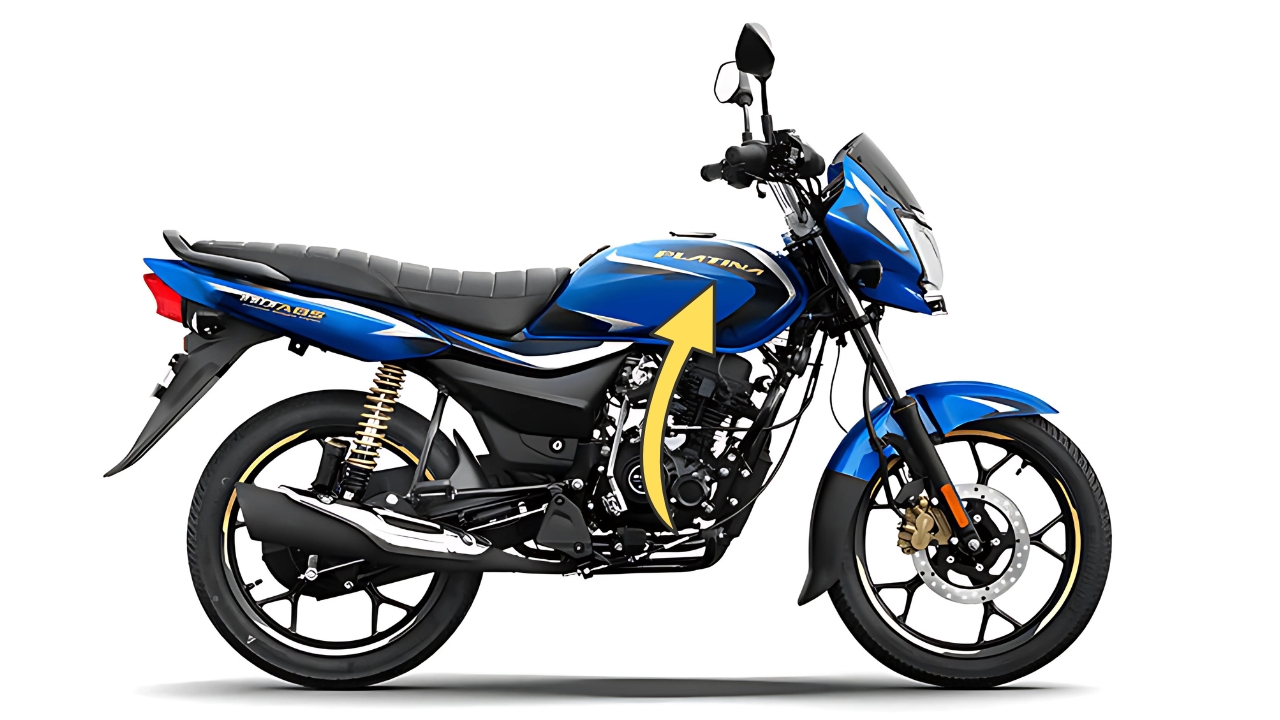
The Platina nameplate has been part of Bajaj’s lineup since 2006, representing the brand’s commitment to delivering affordable, reliable transportation.
What began as a basic 100cc offering has evolved over the years, with the 110cc variant emerging as a response to consumers seeking marginally more power and refinement without sacrificing the core attributes of economy and dependability.
The current iteration of the Platina 110 represents the culmination of nearly two decades of incremental improvements. Rather than dramatic overhauls, Bajaj has focused on addressing specific pain points and enhancing strengths with each update.
This evolutionary approach has resulted in a motorcycle that, while visually similar to earlier models, offers substantially improved comfort, efficiency, and durability.
What’s particularly noteworthy about the Platina 110’s development is how Bajaj has maintained a clear focus on its target audience—commuters who spend hours on their motorcycles daily, often on less-than-ideal road surfaces, and who prioritize running costs and reliability above all else.
This unwavering focus has shaped every aspect of the motorcycle, from engine tuning to ergonomics.
Engineering for Efficiency: The Powerplant
At the heart of the Platina 110 sits a 115.45cc, single-cylinder, air-cooled engine. This humble powerplant produces 8.48bhp at 7,000rpm and 9.81Nm of torque at 5,000rpm—modest figures that belie the thoughtfulness behind its tuning.
While these specifications won’t set enthusiasts’ hearts racing, they represent a carefully calculated balance between performance, efficiency, and longevity.
The engine incorporates Bajaj’s proprietary DTS-i (Digital Twin Spark ignition) technology, which utilizes two spark plugs per cylinder to ensure more complete combustion of the air-fuel mixture.
This technology serves multiple purposes: it improves fuel efficiency, reduces emissions, and enhances engine response particularly at lower RPMs—crucial for a commuter motorcycle that spends most of its life navigating stop-and-go traffic.
What makes this engine particularly well-suited to its role is its torque curve. Peak torque is available at a relatively low 5,000rpm, providing usable pulling power without requiring frequent gear changes.
This characteristic makes the Platina 110 forgiving to ride, especially for less experienced riders or those dealing with congested urban conditions where constant clutch modulation can become tiresome.
The transmission is a straightforward 5-speed unit with an all-down shift pattern. While lacking the sophistication of transmissions found in more expensive motorcycles, it provides positive engagement and appropriate gear ratios for both city and occasional highway use.
The clutch action is light, reducing fatigue during extended rides or heavy traffic—another thoughtful touch for a motorcycle designed primarily for daily commuting.
Fuel efficiency, a critical consideration for the target market, is impressive at around 70 kilometers per liter under real-world conditions.
Combined with the 11-liter fuel tank, this gives the Platina 110 a practical range of approximately 750-800 kilometers between fill-ups—more than sufficient for a week’s worth of commuting for most users.
Comfort-Focused Architecture: Chassis and Ergonomics
If there’s one area where the Platina 110 truly distinguishes itself from competitors, it’s ride comfort.
Bajaj has made significant investments in developing a chassis and suspension system specifically optimized for Indian road conditions, and the results are evident in the motorcycle’s composed behavior over rough surfaces.
The foundation is a tubular single-cradle chassis that provides adequate rigidity while maintaining the light 119kg kerb weight.
Front suspension duties are handled by conventional telescopic forks, while the rear features Bajaj’s ComforTec technology with Nitrox gas-charged shock absorbers using a spring-on-spring arrangement.
This rear suspension design is particularly noteworthy. The primary spring handles normal compression loads, while the secondary spring engages only when encountering larger impacts.
This progressive setup allows the suspension to remain compliant over small bumps while still providing sufficient control when hitting larger obstacles.
The gas charging reduces suspension fade during extended rough road sections, maintaining consistent damping characteristics.
The ergonomics have been equally well-considered. The rider’s seat is wide, long, and features quilted padding for enhanced comfort during longer rides.
At 807mm, the seat height is accessible for riders of various statures, and the natural riding position places minimal strain on the wrists, back, and knees.
The handlebar position has been calibrated to provide good leverage for low-speed maneuverability without inducing fatigue on longer journeys.
Even the footpegs have received attention, with the pillion footpegs being wider than typical for this segment, providing better support for passengers.
These seemingly minor details collectively create a substantially improved riding experience compared to more basic commuters.
Ground clearance stands at an impressive 200mm, allowing the Platina 110 to negotiate rough roads and unexpected obstacles without scraping its underside—a practical consideration for riders who frequently encounter unpaved sections or poorly maintained infrastructure.
Braking and Safety: Pioneering ABS in the Segment
In a segment where cost-cutting often results in compromised safety features, the Platina 110 stands out for offering genuinely progressive technology.
Most notably, it is the only motorcycle in the sub-125cc segment to offer Anti-lock Braking System (ABS) technology, although this is limited to the higher-spec ABS variant.
The standard variant makes do with a more conventional 130mm drum brake at the front and a 110mm drum at the rear, linked by a Combined Braking System (CBS).
This setup, while basic, provides adequate stopping power for the motorcycle’s weight and performance envelope.
For those willing to invest more in safety, the ABS variant features a 240mm front disc with single-channel ABS, while retaining the rear drum brake.
This represents a significant upgrade in braking performance and control, particularly in emergency situations or when riding on loose or wet surfaces—conditions that are not uncommon on Indian roads.
The inclusion of ABS at this price point and displacement category demonstrates Bajaj’s commitment to democratizing safety features rather than reserving them exclusively for premium models.
It also provides a meaningful differentiation from competitors who typically offer only CBS at this price point.
Visual Design and Styling: Functional Aesthetics
The Platina 110’s design philosophy prioritizes function over fashion, resulting in a motorcycle that won’t turn heads but presents a clean, inoffensive aesthetic.
The overall silhouette is typical of the commuter segment, with a straightforward tank, simple side panels, and minimal bodywork.
Recent updates have introduced some contemporary elements, including LED daytime running lights integrated into the headlamp assembly, giving the front end a more modern appearance.
The headlight itself remains a conventional halogen unit, providing adequate illumination without the expense of full LED technology.
Other design touches include knuckle guards that protect the rider’s hands from wind and debris, a practical addition that enhances comfort during longer rides or inclement weather.
The instrument cluster is an analog speedometer with basic tell-tale lights for essential information—simple but functional and easily readable in all lighting conditions.
Color options for the Platina 110 include Ebony Black Blue, Ebony Black Red, and Cocktail Wine Red-Orange for the drum brake variant, while the ABS variant offers Cocktail Wine Red, Ebony Black, and Saffire Blue.
These color schemes tend toward conservative choices that age well and maintain their appeal across demographic groups.
The alloy wheels feature a straightforward multi-spoke design that prioritizes strength and durability over stylistic flourishes—again reflecting the motorcycle’s utilitarian focus.
Tubeless tires come standard, offering enhanced puncture safety compared to tube-type tires still found on some competitors.
Feature Set: Focused on What Matters
The Platina 110’s feature list is modest but targeted toward enhancing the ownership experience in meaningful ways rather than padding the specification sheet with novelties. Standard features include:
-
Electric start across all variants
-
Comfortable quilted seating for rider and pillion
-
LED DRL for improved daytime visibility
-
Tubeless tires on alloy wheels
-
ComforTec suspension with Nitrox gas-charged shock absorbers
-
Low maintenance engine with extended service intervals
-
Combined Braking System (CBS) or ABS depending on variant
Notably absent are features like Bluetooth connectivity, USB charging ports, or digital instrumentation found on some competitors.
Bajaj has clearly chosen to invest in mechanical fundamentals and rider comfort rather than electronic conveniences—a decision that aligns with the priorities of value-conscious buyers who can easily add aftermarket solutions for device charging if needed.
This focused approach to feature selection helps maintain the Platina 110’s competitive pricing while delivering exceptional value in areas that impact the daily riding experience most directly.
Ownership Experience: The Long-Term Proposition
Beyond the immediate specifications and features, the Platina 110 offers several advantages that become apparent over the ownership lifecycle.
These factors contribute significantly to its popularity among experienced commuters who take a long-term view of their purchase decision:
Maintenance and Reliability
The Platina 110’s engine design prioritizes simplicity and robustness, with minimal complicated components that could fail or require specialized service.
Regular maintenance tasks are straightforward, with good access to service points, and the air-cooled design eliminates concerns about coolant systems or radiator issues.
Bajaj’s extensive service network ensures that parts and qualified technicians are readily available even in smaller towns and cities—a crucial consideration for a utilitarian vehicle that cannot afford extended downtime.
Service intervals are reasonable, and the cost of routine maintenance is among the lowest in its class, enhancing the total cost of ownership equation.
Fuel Efficiency and Economics
With real-world fuel efficiency of approximately 70 kilometers per liter, the Platina 110 offers economical operation that translates to tangible savings for daily commuters.
For a rider covering 50 kilometers daily, the annual fuel cost is significantly lower than for less efficient alternatives or public transportation in many cases.
This efficiency, combined with the motorcycle’s mechanical durability and reasonable spare parts pricing, results in a compelling economic proposition over a typical 5-7 year ownership period.
The initial purchase price may be marginally higher than some competitors, but the long-term value proposition often favors the Platina, particularly for high-mileage users.
Resale Value
Bajaj motorcycles generally maintain good resale value in the Indian market, and the Platina series is no exception.
The nameplate’s reputation for reliability and the motorcycle’s durable construction help preserve value even after several years of use, provided basic maintenance has been performed.
This residual value consideration is important for buyers who typically upgrade their vehicles every few years, as it effectively reduces the real cost of ownership during their tenure with the motorcycle.
Market Positioning and Competition
The Platina 110 occupies an interesting position in the Indian commuter motorcycle landscape. With an ex-showroom price starting at approximately Rs. 71,558 for the drum brake variant and extending to around Rs. 80,774 for the ABS variant, it sits toward the premium end of the 110cc segment.
This pricing places it in competition with a diverse range of alternatives, including:
-
Hero Splendor Plus (more affordable but with slightly less power and features)
-
TVS Radeon (similar positioning with alternative styling)
-
Honda Shine 100 (newer entrant with the Honda reliability reputation)
-
Bajaj’s own CT 110 (more basic alternative with similar engine)
Each competitor offers a different value proposition, but the Platina 110 distinguishes itself primarily through its comfort-focused engineering and, in the case of the ABS variant, superior braking technology.
For riders who prioritize comfort on longer commutes or frequently encounter poor road conditions, the Platina makes a compelling case despite its premium positioning.
The motorcycle also serves as a stepping stone between basic 100-110cc commuters and the more powerful 125cc segment, offering a balance of economy and performance that appeals to riders who find 100cc engines insufficient but cannot justify the additional expense of a 125cc motorcycle.
The 2025 Update: Refinement Continues
The 2025 model year brings subtle but meaningful improvements to the Platina 110, reflecting Bajaj’s commitment to continuous refinement rather than dramatic redesigns.
The updated model is currently reaching dealerships across India, with an expected price increase of approximately Rs. 1,000-2,000 over the previous version.
While detailed specifications for the 2025 model haven’t been officially released, observations from dealer units suggest enhanced graphics, minor ergonomic adjustments to the seat profile, and potentially some refinements to the engine tuning for improved NVH (Noise, Vibration, Harshness) characteristics.
These iterative improvements align with Bajaj’s established pattern of addressing customer feedback and making targeted enhancements with each model year, gradually elevating the ownership experience without dramatic price increases or risky redesigns that might compromise the motorcycle’s core attributes.
The Ideal Rider: Who Should Consider the Platina 110?
Understanding who would benefit most from the Platina 110’s specific combination of attributes helps potential buyers determine if it’s the right choice for their needs. The motorcycle is particularly well-suited to:
Long-Distance Commuters
Riders who cover significant distances daily will appreciate the Platina 110’s exceptional comfort, fuel efficiency, and reliability.
The ComforTec suspension system and ergonomic seating make extended time in the saddle less fatiguing, while the efficient engine minimizes running costs.
Rural and Semi-Urban Users
The 200mm ground clearance, robust construction, and forgiving suspension make the Platina 110 well-adapted to areas with inconsistent road quality.
The motorcycle’s simple maintenance requirements and Bajaj’s extensive service network ensure serviceable even in smaller towns.
Mature and Experienced Riders
While younger riders may be drawn to more stylish alternatives, experienced commuters who prioritize practical considerations over appearance often gravitate toward the Platina 110.
Its understated design, focus on comfort, and thoughtful engineering appeal to those who view their motorcycle primarily as transportation rather than a style statement.
Value-Conscious Upgraders
For riders looking to step up from a basic 100cc motorcycle or an older commuter, the Platina 110 offers a meaningful improvement in performance, features, and comfort without the significantly higher purchase and running costs associated with larger displacement categories.
Bajaj Platina 110: The Unsung Hero of Indian Commuting
The Bajaj Platina 110 exemplifies how thoughtful engineering focused on specific user needs can create a product that exceeds the sum of its parts.
While it may lack the excitement of performance motorcycles or the technological showcase of premium models, it delivers exceptional value in the areas that matter most to daily commuters—comfort, economy, reliability, and longevity.
In a market increasingly drawn to flash and novelty, the Platina 110 remains steadfastly focused on its core mission of providing dependable, comfortable transportation at a reasonable cost.
This singularity of purpose has earned it a loyal following among pragmatic riders who appreciate its refined approach to the commuter motorcycle formula.
For potential buyers weighing their options in this segment, the Platina 110 deserves serious consideration, particularly for those who prioritize ride comfort and total ownership costs over initial purchase price or stylistic flourishes.
Its ongoing evolution demonstrates Bajaj’s commitment to this philosophy, suggesting that future iterations will continue refining this tried-and-tested formula rather than compromising its essential character in pursuit of trends.
The Platina 110 may never inspire the passionate devotion of enthusiast motorcycles, but for thousands of Indian riders, it fulfills a more important role—a trustworthy partner in daily mobility that quietly excels at making the necessary task of commuting as painless and economical as possible. In that specific mission, few motorcycles can match its focused excellence.

